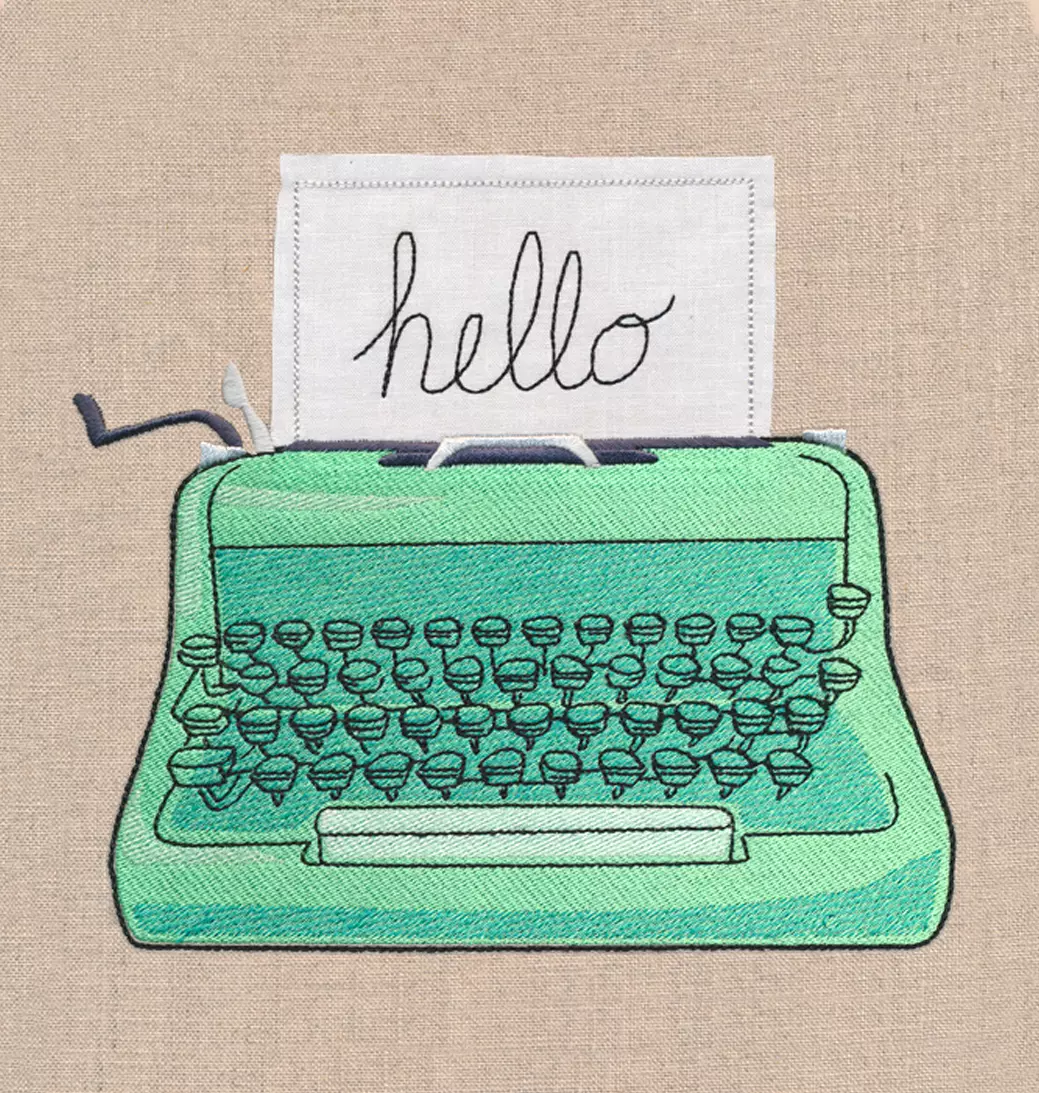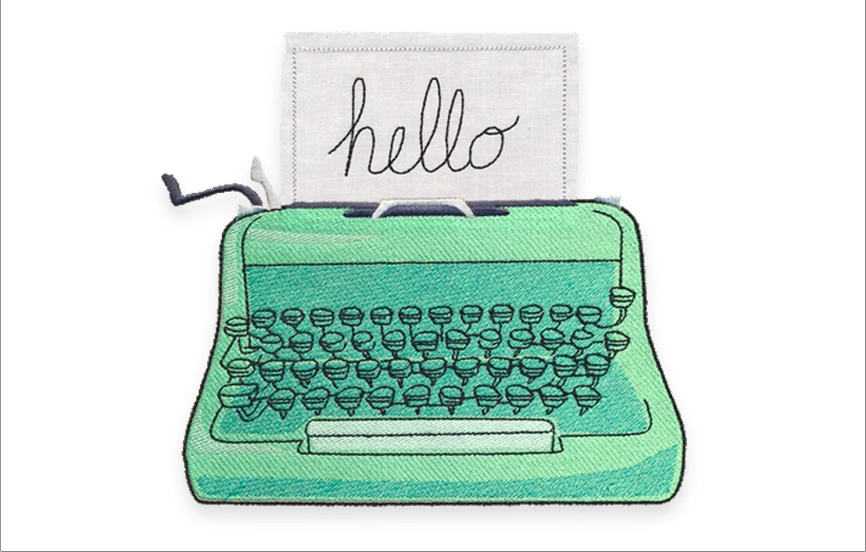In the age of computers, it’s probably something we all have... that strange little clicking device known as a mouse. Like any cool mouse, it needs a “pad” to hang out on, and mousepads have evolved from simple lumps of rubber to highly designed, logo-covered desk accessories. Considering how simple a mouse pad really is, you would think something as basic as it could reflect our personality a little more. After all, with all the hours of the day you probably spend on a computer between work, homework, and your free time, you probably stare at that thing a lot. Like, quite a lot. So why not make it your own? It’s super fast and simple, and even makes a great gift!
Supplies
To customize your mouse pad, you’ll need:
-
A mousepad (didn’t see that comin’, didja?). Something thin enough to go under your sewing machine. Mine was about 1/8 inch thick. Also, make sure your mousepad doesn’t have a hard plastic surface on the top – that would make it tricky to sew through.
-
Smooth, non-bumpy, non-fuzzy fabric to recover it. Also, because we’re ironing it, make sure it doesn’t melt either. That would be bad.
-
Double sided fusible webbing
-
No-show light mesh stabilizer
-
An iron
Designs Used
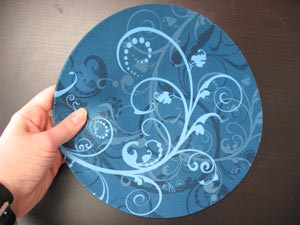
There are a few things you’ll want to think about when you’re designing your mousepad, especially depending on what kind of mouse you have.
A ball mouse is the kind that has a little inset ball on the bottom, and that rolls along the pad in order to track the motion. An optical mouse uses a laser. Laser mice tend to be more accurate, but certain things may mess up the optics. Avoid using metallic or highly reflective threads that will confuse the mouse, and keep the surface as smooth as possible. Light designs, like scribbles, are best for this, but keep in mind you may want to test your mouse out on the embroidered surface before you commit it to your pad.
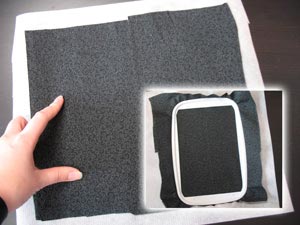
Grab your fabric. It should be both large enough to hoop, and large enough to cover your whole mouse pad with a little excess around the edges. Hoop it up with a piece of the no-show mesh stabilizer. We’re using this stabilizer because we don’t want to bulk up the mousepad any more than we have to; however, if you only have cutaway stabilizer, that should work fine too.
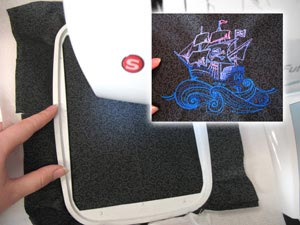
Hoop up your fabric and set it under your machine. For you design, choose something light and simple (like a scribble) that won’t pucker your fabric too much and mess with your mouse. I felt my mousepad was not nearly pirate-y enough, so I added a scurrvy schooner, ye salty dawg. Yarr, me hearties...yarrr...
*ahem* Sorry.
You can pick anything you like – whatever is light-stitching and suits your and your mouse’s fancy.
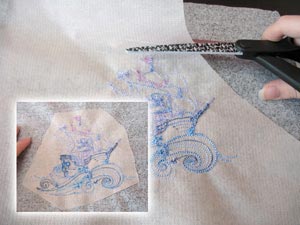
Once your design has finished stitching, flip it over and cut off as much excess stabilizer as possible. We need to remove the stabilizer, otherwise the fusing will just fuse the stabilizer to the mousepad, and not the fabric, and that wouldn’t be good.
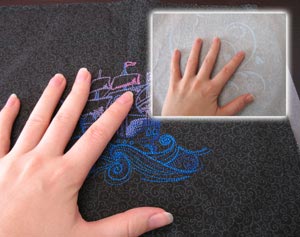
Now it’s time for the double sided fusible webbing. Follow the directions on your webbing’s package – some may have sticky sidings, or have different steps for fusing, so it’s best to listen to the manufacturer.
You want your webbing, like your fabric, to be just a little bit larger than your mousepad. We’ll trim it afterwards to get a more perfect fit. Lay your webbing on top of your mousepad, and then center your fabric with your design on top of it.
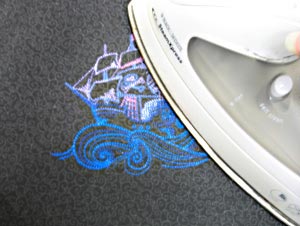
Grab your iron, and following the directions on your webbing, iron over your fabric. You’ll need your iron hot enough to melt the webbing to both the mousepad and to your fabric. Some webbings have a sticky cover on both sides, so you can first fuse it to the mousepad, remove the wax layer, and then fuse the top to the fabric. Do NOT iron the back of your mousepad, as most of them are plastic or rubber and it would make a horrible mess. I was able to fuse both layers by just ironing the top for a little while.
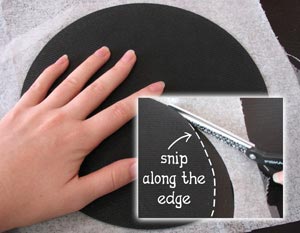
Once your layers are fused together, turn your mousepad over and grab your scissors. Carefully cut around your mousepad, staying right up to the edge, so you get a perfect fit for your fused fabric.
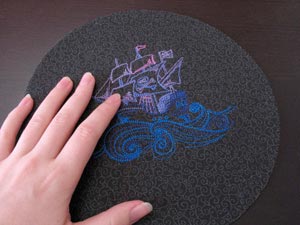
Nearly done! We have a neatly fused fabric pad, but to make sure the fabric doesn’t ever come off, we’re going to give it one more level of permanency.
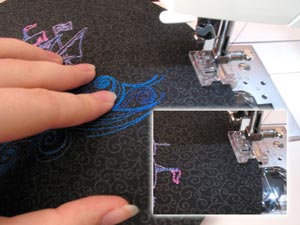
I sewed a double seam around the edge of my mousepad, one about 1/4 inch in, and the other as close to the edge as possible. This gives it a finished look, and makes sure your fabric top never comes off. As long as your mousepad isn’t super thick, you should have no trouble running it under your sewing machine.
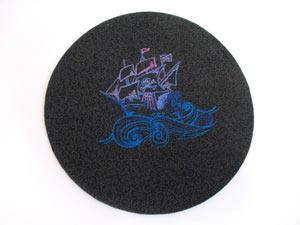
All done! How easy was that? Fast, simple, permanent, and a great way to customize the desk you spend so long staring at all day. My desk is now much more colorful and piratey. Yar.
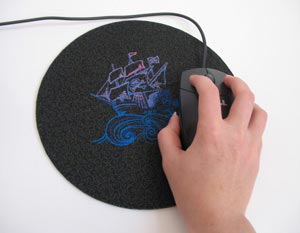
Accessorize your desk in style! You mouse will love its groovy new pad and you’ll love its new look. This technique is great because it works for any shape or size of mousepad, and makes a super fast and easy gift. Just a few minutes of embroidery, an iron, and presto!
Enjoy your swank new piratey pad, little mouse. I know I will.

